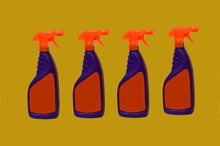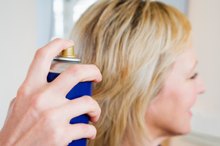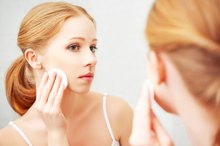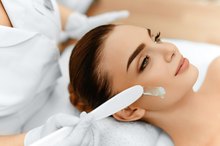Sodium Laureth Sulfate Allergy
Sodium laureth sulfate, also commonly referred to as SLS or sodium lauryl ether sulfate, is a key ingredient in many toiletry products. Soaps, shampoos and toothpastes commonly include SLS in their ingredients. However, some people with a sensitivity to SLS can experience allergic reactions to this compound. Consult your doctor for advice regarding any new allergy symptoms.
About SLS
Sodium laureth sulfate is used to make toiletry products foam when they are mixed with water. This is how your shampoo and toothpaste become foamy when you use them. Controversy regarding the use of SLS in toiletry products centers upon the potential for allergic reactions, and the presence of certain carcinogenic compounds in products which contain SLS. Carcinogenic substances have the potential to cause cancer, although it is uncertain how such carcinogens could affect your body when they are not ingested or eaten.
- Sodium laureth sulfate is used to make toiletry products foam when they are mixed with water.
Allergy Symptoms
Allergic Reaction to Hair Product: Scaly Dry Rash on Neck
Learn More
An allergy to SLS is actually more likely to be a sensitivity to this ingredient. If you already have sensitive or dry skin, the grease-removing action of SLS can make your skin condition worse. Allergic reactions or sensitivity to SLS have been associated with scalp itchiness and dry, cracked, itchy or flaky skin. SLS may make your skin sensitive even if it wasn't sensitive before. In toothpaste, SLS has been associated with physical reactions including cracks at the corner of the mouth or the development of canker sores.
- An allergy to SLS is actually more likely to be a sensitivity to this ingredient.
- In toothpaste, SLS has been associated with physical reactions including cracks at the corner of the mouth or the development of canker sores.
Alternatives
Several different compounds can be used for foaming effect in SLS-free toiletries. Sodium coco sulfate, a coconut derivative, has a foaming action without the potential for formation of the carcinogenic chemical 1,4-dioxane. Ammonium lauryl sulfate is typically used in shampoos and body wash products and is sold as an alternative to SLS. A more extreme alternative to SLS use is to completely stop using shampoo products. Proponents of a no-shampoo lifestyle indicate that your hair can become self-cleansing over time.
- Several different compounds can be used for foaming effect in SLS-free toiletries.
Labeling
Bleach Allergy & Rash
Learn More
The names and labeling of different chemical compounds in toiletries can be confusing. Sodium laurel sulfate, also spelled sodium lauryl sulfate, is closely related to SLS. Because SLS is a coconut derivative, some products containing SLS are labeled and marketed as "all natural." This may confuse you if you are looking for SLS-free products to reduce the risk of allergic reactions. The only way to make sure a product contains no SLS is to read the entire ingredient list.
- The names and labeling of different chemical compounds in toiletries can be confusing.
- Because SLS is a coconut derivative, some products containing SLS are labeled and marketed as "all natural."
Related Articles
References
- "International Journal of Toxicology"; Final Report of the Amended Safety Assessment of Sodium Laureth Sulfate and Related Salts of Sulfated Ethoxylated Alcohols; V.C. Robinson, et al.; July 2010
- "Journal of AOAC International"; Occurrence of 1,4-dioxane in Cosmetic Raw Materials and Finished Cosmetic Products; R.E. Black, et al.; May/June 2001
- Mother Nature Network; Safe Shampoo?; Sarah Schmidt; March 2009
- MSNBC; Ditching Shampoo -- A Dirty Little Secret; Melissa Dahl; April 2009
- "Compendium of Continuing Education in Dentistry"; The Effect of Sodium Lauryl Sulfate on Recurrent Aphthous Ulcers: A Clinical Study; L. Chahine, et al.; December 1997
Writer Bio
Jae Allen has been a writer since 1999, with articles published in "The Hub," "Innocent Words" and "Rhythm." She has worked as a medical writer, paralegal, veterinary assistant, stage manager, session musician, ghostwriter and university professor. Allen specializes in travel, health/fitness, animals and other topics.









